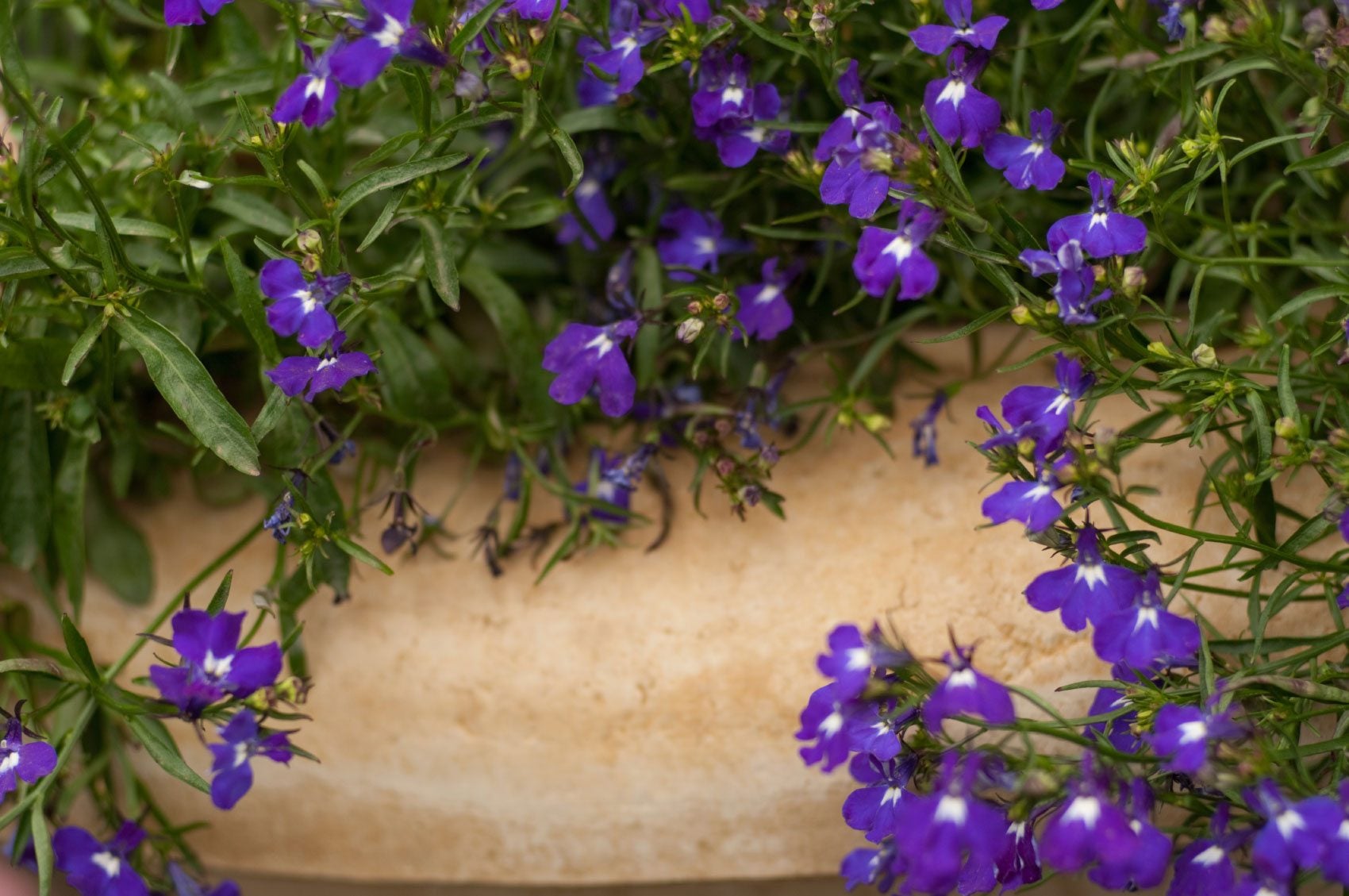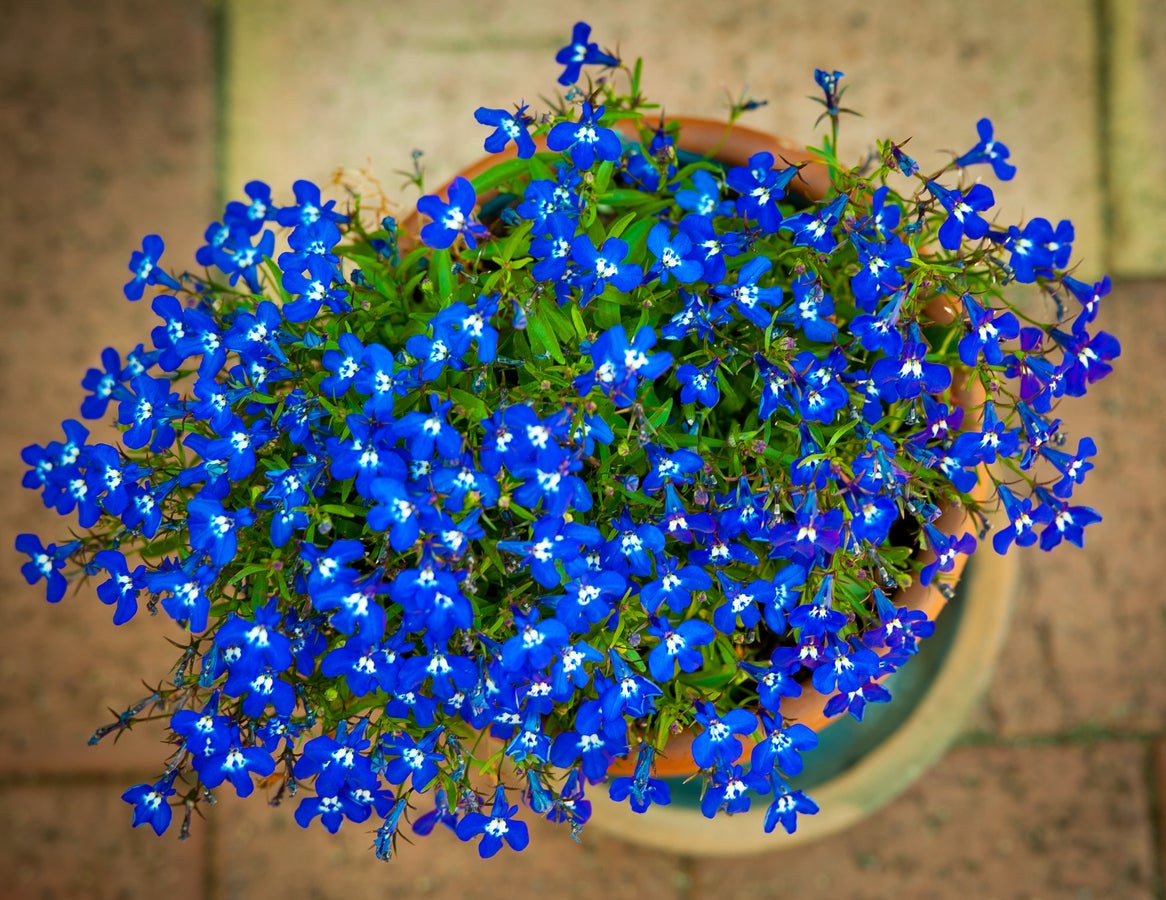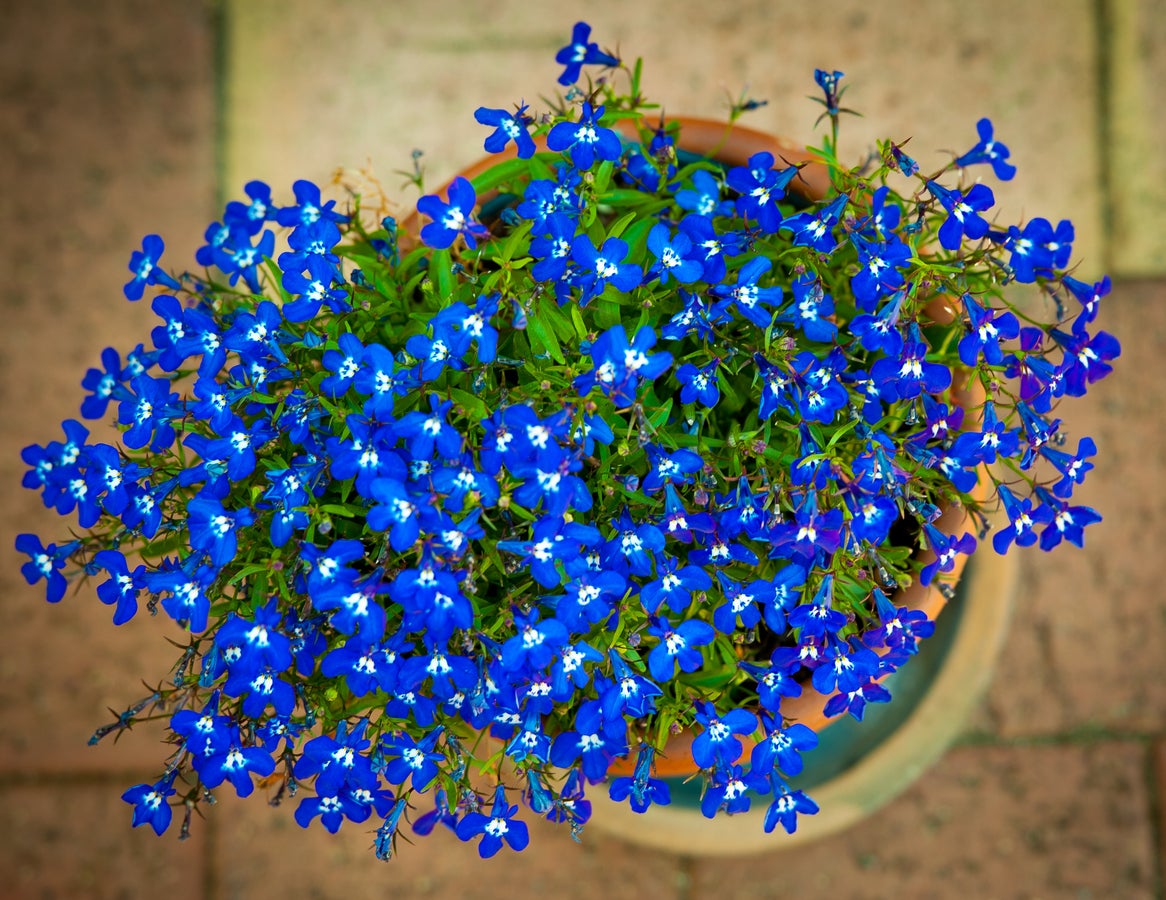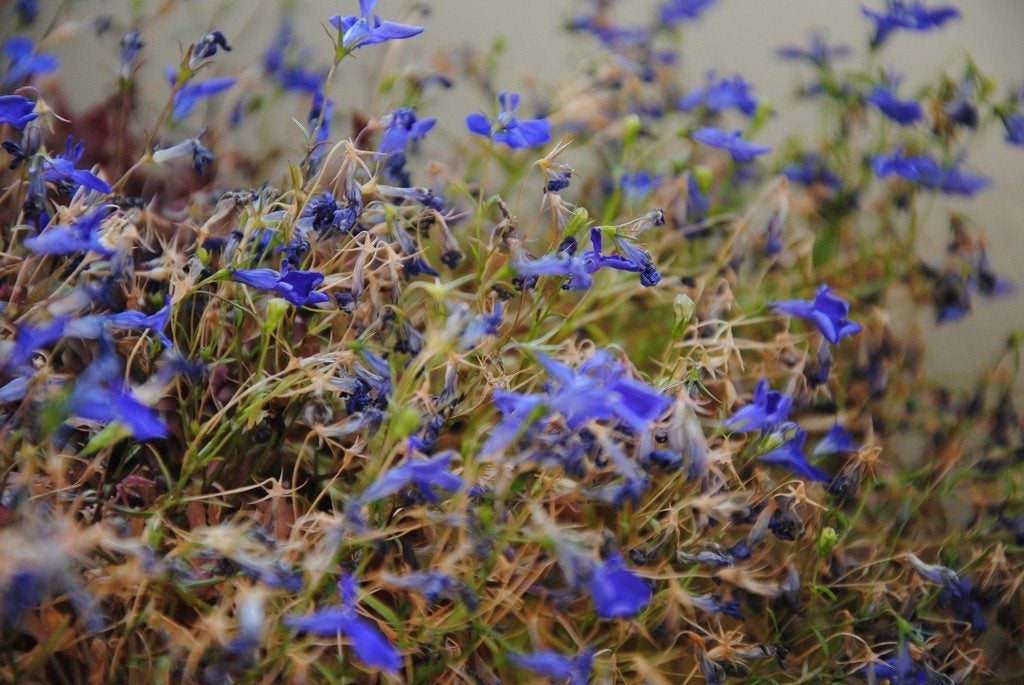Cutting Back Lobelia: When Should I Prune My Lobelia Plants


Lobelia flowers make a lovely addition to the garden but like many plants, pruning is an important part of keeping them looking their best. Keep reading to find out how and when to prune lobelia plants.
Should I Prune My Lobelia?
Yes. Cutting back lobelia plants improves their appearance and health. It also encourages the plant to produce more flowers over a longer period of time. The three types of pruning that benefit lobelia plants are removing spent flowers, pinching, and cutting back.
When to Trim Lobelia
The timing depends on the type of pruning. Pinching is an early spring task. Pinch back newly emerging stems when they are about six inches (15 cm.) long. Pinch newly planted lobelia when they recover from transplanting. Give the plant a light trim any time of year. Do the major pruning or cutting back after the plants stop blooming.
How to Prune Lobelia Flowers
Pinching plants means taking off the tips and top two leaves of tender, young growth. It encourages bushy growth and better flowering. The best tool for the job is a thumbnail. Squeeze the tip of the stem between your thumbnail and index finger to make a clean break. Give the plant a light trim with a pair of scissors when it needs a bit of tidying. This includes trimming to remove spent blossoms. For spiky types, wait until the entire spike has faded before clipping out the stems. Cut back the plant by half or more at the end of its bloom period. Trimming back lobelia plants keeps them from looking messy, and it may encourage another flush of blooms.
Pruning Edging and Trailing Lobelia
These two little plants grow only about 6 inches (15 cm.) tall. They survive winters in U.S. Department of Agriculture plant hardiness zones 10 and 11, but they are usually grown as spring annuals because they fade in the summer heat. Edging and trailing lobelia follow a schedule similar to pansies and linaria, and most growers remove them in early summer when they no longer look their best. If you decide to leave them in the garden, cut them back by one-half to two-thirds to encourage fall blooms. Edging and trailing lobelias are classified as self-cleaning, which means you don't have to deadhead them.
Gardening tips, videos, info and more delivered right to your inbox!
Sign up for the Gardening Know How newsletter today and receive a free copy of our e-book "How to Grow Delicious Tomatoes".

Jackie Carroll has written over 500 articles for Gardening Know How on a wide range of topics.
-
 4 Superfast Composting Methods: Turn Waste Into Garden Gold In 30 Days Or Less
4 Superfast Composting Methods: Turn Waste Into Garden Gold In 30 Days Or LessTry the fastest composting methods to turbocharge your pile and transform kitchen scraps and garden waste into finished compost in just a few weeks.
By Mary Ellen Ellis
-
 Best Spider Plant Soil – Complete Soil Guide And Expert Tips For Keeping Plants Happy
Best Spider Plant Soil – Complete Soil Guide And Expert Tips For Keeping Plants HappySpider plants are fun and easy plants to grow, but what is the best soil for a spider plant? Selecting the right soil is important so they can thrive.
By Bonnie L. Grant
-
 Lobelia Winter Care – Tips For Overwintering Lobelia Plants
Lobelia Winter Care – Tips For Overwintering Lobelia PlantsThere are many types of Lobelia. Some are annuals and some are perennials. Lobelia winter hardiness varies by species, but even the hardy Lobelias need special care to survive cold temperatures. Click this article for important tips on Lobelia winter care.
By Bonnie L. Grant
-
 Potted Lobelia Care: Tips For Growing Lobelia In Containers
Potted Lobelia Care: Tips For Growing Lobelia In ContainersPlant ornamental lobelia in a basket or containers for a splash of bright color.
By Tonya Barnett
-
 Lobelia Browning: Why Lobelia Plants Turn Brown
Lobelia Browning: Why Lobelia Plants Turn BrownLobelia plants make beautiful additions to the garden with their unusual flowers and bright colors, but problems with lobelia can result in brown lobelia plants. This article can help with that.
By Kristi Waterworth
-
 Lobelia Care Guide: How To Grow Edging Lobelia
Lobelia Care Guide: How To Grow Edging LobeliaA lovely herb plant with bright blue to purple blossoms, the trailing lobelia flower is a perfect choice for filling in around garden beds, driveways and borders. It’s easy to grow and, depending on your zone, can be an annual or perennial.
By Nikki Tilley